July 14 to July 20
The labor group representatives banged loudly on the glass walls separating them and legislators, while other protesters scattered ghost money from the second floor. Several people then barged into the room and charged toward the legislators, only to be dragged out by security. They lingered outside the building, yelling, “The Chinese Nationalist Party (KMT) is a bully, the Democratic Progressive Party (DPP) is a pushover!”
Earlier that day, about 60 labor activists put on three satirical plays in front of the Legislative Yuan. In one scene, an actor, playing then-president Lee Teng-hui (李登輝), ordered the Legislative Yuan and the Executive Yuan to whip the nation’s workers, who held signs that read “robbing the poor to benefit the rich” and “this is an increased burden on workers.” The workers eventually used a large hammer to knock the president out cold.
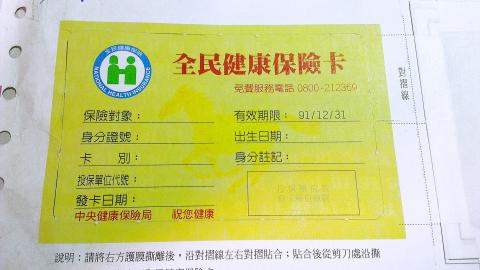
Photo courtesy of Wikimedia Commons
Despite the disturbances, in the wee hours of July 19, 1994, legislators passed the third reading of the National Health Insurance Act after extending its session for three days to discuss the bill. Universal health insurance is something we take for granted today, but even this policy experienced its share of birth pangs, plagued by lengthy negotiations and robust opposition from various groups.
The protests continued, but even with news of the government not being ready to launch the program, the first version of the national health insurance was officially implemented on March 1, 1995.
DIFFICULT BIRTH
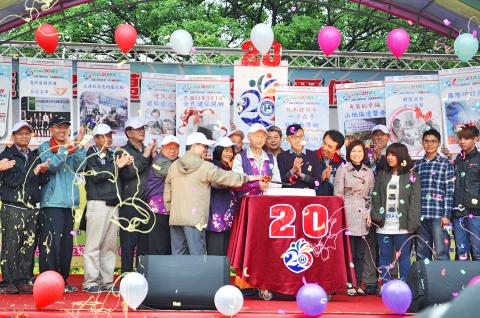
Photo: Chou Min-hung, Taipei Times
Before national health insurance came into effect, people fell under 13 different insurance policies according to profession and income level that were managed under a number of government entities. All of these had different rules and benefits. About 54 percent of the population had health insurance in 1994, with more than 70 percent of the uninsured consisting of minors and the elderly.
With rising incomes, the government felt it could support a universal system. The original goal, set in 1986, was to implement it by 2000, with preparations commencing in 1988. By 1992 or 1993, the government had moved the deadline forward to 1994.
One ongoing point of contention was the ratio of contribution between employee and employer: in May 1994, labor groups visited the Executive Yuan and demanded a 2 to 8 ratio, while corporate representatives wanted a 5 to 5 split. The government settled on a 4 to 6 split, which did not please either side. Talks with the Legislative Yuan also broke down after the bill’s first reading, and as they prepared for the second reading, labor groups started their “anti-jianbao” campaign, substituting the original jian (健, health) with a homophone (賤, crappy).
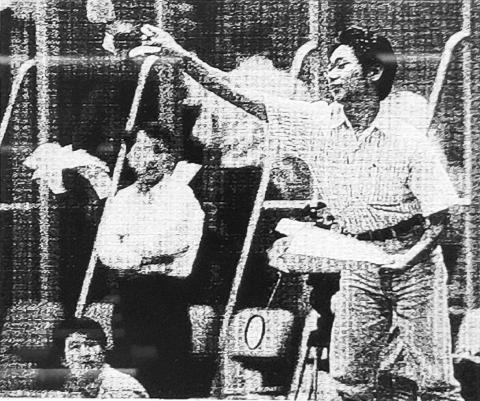
Photo: Chung Kuo-wei, Taipei Times
Even after the government agreed to pitch in 10 percent, about 100 laborers on July 14 rammed the legislature’s metal doors, unhappy about both insurance rates and the contribution ratio. Even legislators could not agree with each other, but Lee ordered them to push it through the third reading. Strangely, this version actually did not include the clause that made national health insurance compulsory, which was the whole point of the exercise. That would be amended in another session in September.
The protests did not end there. On Sept. 4, the Taiwan Hospital Association issued a statement, noting that universal healthcare would harm the hospital system. Two days later, labor groups took to the streets, asking to reduce premiums, abolish the referral system and further reduce contribution costs. On Nov. 1, about 30,000 workers stopped working for one hour to show their dissatisfaction.
Due to a lack of preparedness, the government was not able to meet its goal of implementing the program on Jan. 1, 1995. However, Lee was adamant that the policy begin on March 1 no matter what, leading to a “transitional” period before the system would be normalized on April 1. This garnered more criticism.
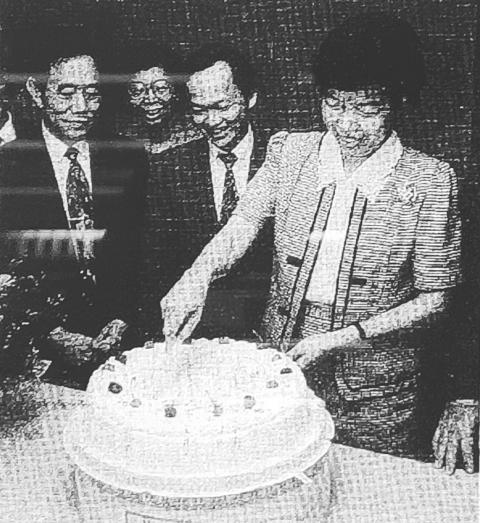
Photo: CNA
ROUGH BEGINNINGS
The roll out was extremely chaotic. The day before the act went into effect, people sought to take advantage of their more favorable existing insurance policies one last time. Traffic at hospitals reached new highs with some doctors seeing nearly 400 patients a day.
The Liberty Times (the Taipei Times’ sister newspaper) reported that while there were few patients on the first day, emotions were high as people remained confused about the system, failing to bring required documents or balking at various new fees. Some doctors also took advantage of the insurance cards not being fully issued yet to create fake patients for payment.
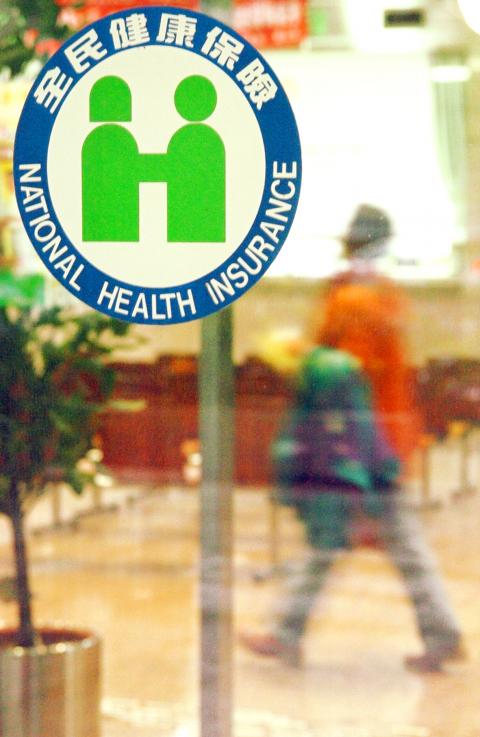
Photo: Wang Min-wei, Taipei Times
“The government undoubtedly has good intentions, but the problem is it rushed to implement the plan with the system not even complete. Even its staff, medical professionals and those insured don’t fully understand the act, with many still skeptical and harboring misgivings. Of course there is going to be chaos,” a United Daily News editorial stated.
The ROC Consumers Foundation received hundreds of calls that day complaining of the increased hospital registration fees, while the activists staged another satirical play in front of National Taiwan University Hospital.
However, there was also heartwarming news. A 15-year old boy’s battle with acute myeloid leukemia had drained his family’s resources, and they were running out of options when the plan passed.
“We were thinking of going to protest if the plan wasn’t implemented on March 1,” his mother told the United Daily News.
By January 1997, a government survey showed that only 11 percent of respondents expressed dissatisfaction toward the policy, while 75 percent were satisfied, but hoped to see more improvements.
While this was a marked improvement from two years previous, just 7 percent thought the plan was perfect, and more changes would be made over the years until it took the shape it has today.
Taiwan in Time, a column about Taiwan’s history that is published every Sunday, spotlights important or interesting events around the nation that have anniversaries this week.

On April 26, The Lancet published a letter from two doctors at Taichung-based China Medical University Hospital (CMUH) warning that “Taiwan’s Health Care System is on the Brink of Collapse.” The authors said that “Years of policy inaction and mismanagement of resources have led to the National Health Insurance system operating under unsustainable conditions.” The pushback was immediate. Errors in the paper were quickly identified and publicized, to discredit the authors (the hospital apologized). CNA reported that CMUH said the letter described Taiwan in 2021 as having 62 nurses per 10,000 people, when the correct number was 78 nurses per 10,000

As we live longer, our risk of cognitive impairment is increasing. How can we delay the onset of symptoms? Do we have to give up every indulgence or can small changes make a difference? We asked neurologists for tips on how to keep our brains healthy for life. TAKE CARE OF YOUR HEALTH “All of the sensible things that apply to bodily health apply to brain health,” says Suzanne O’Sullivan, a consultant in neurology at the National Hospital for Neurology and Neurosurgery in London, and the author of The Age of Diagnosis. “When you’re 20, you can get away with absolute

May 5 to May 11 What started out as friction between Taiwanese students at Taichung First High School and a Japanese head cook escalated dramatically over the first two weeks of May 1927. It began on April 30 when the cook’s wife knew that lotus starch used in that night’s dinner had rat feces in it, but failed to inform staff until the meal was already prepared. The students believed that her silence was intentional, and filed a complaint. The school’s Japanese administrators sided with the cook’s family, dismissing the students as troublemakers and clamping down on their freedoms — with

As Donald Trump’s executive order in March led to the shuttering of Voice of America (VOA) — the global broadcaster whose roots date back to the fight against Nazi propaganda — he quickly attracted support from figures not used to aligning themselves with any US administration. Trump had ordered the US Agency for Global Media, the federal agency that funds VOA and other groups promoting independent journalism overseas, to be “eliminated to the maximum extent consistent with applicable law.” The decision suddenly halted programming in 49 languages to more than 425 million people. In Moscow, Margarita Simonyan, the hardline editor-in-chief of the